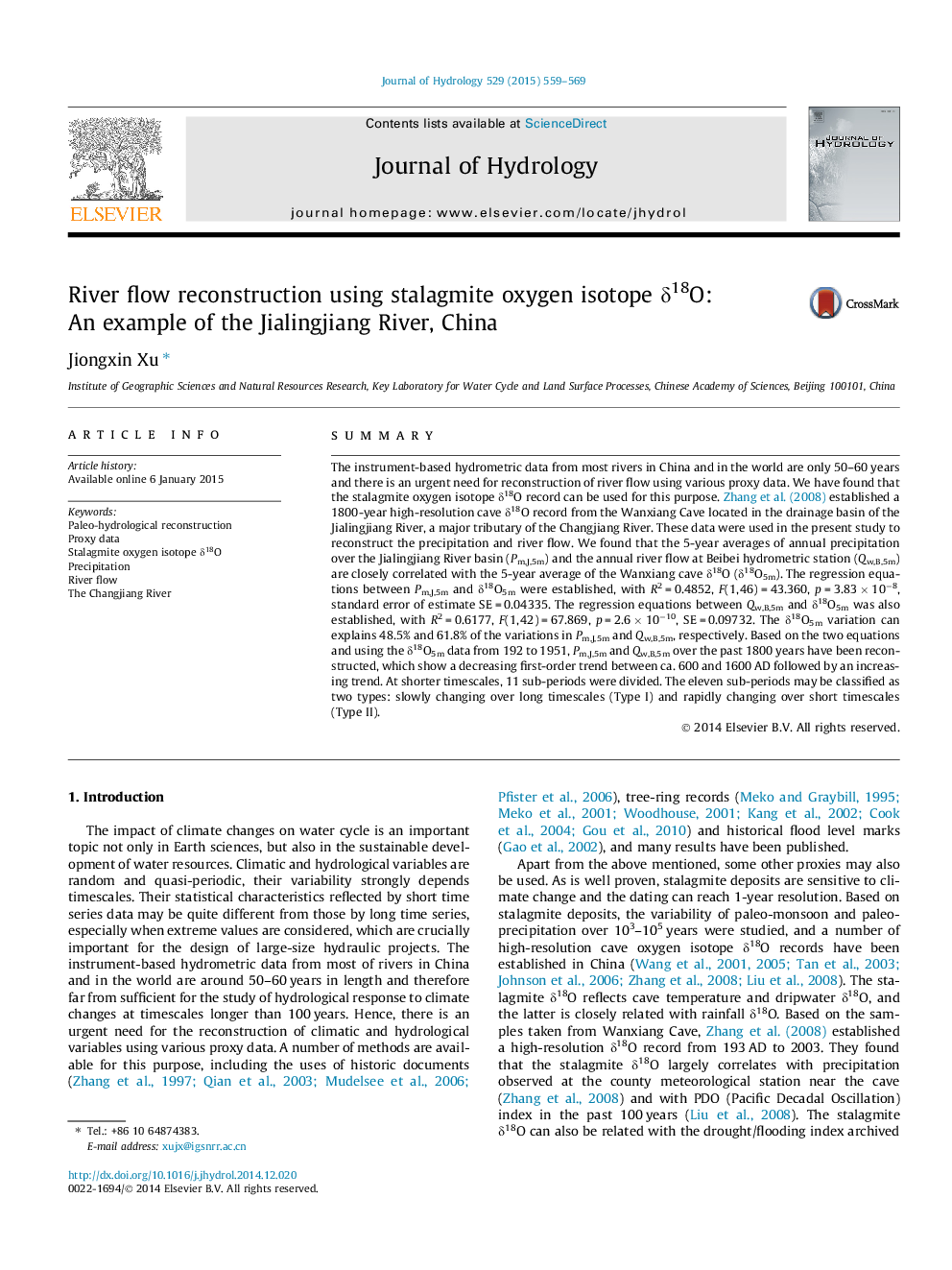| کد مقاله | کد نشریه | سال انتشار | مقاله انگلیسی | نسخه تمام متن |
|---|---|---|---|---|
| 4575928 | 1332888 | 2015 | 11 صفحه PDF | دانلود رایگان |

• We found close correlation of river flow with cave stalagmite δ18O in river basin.
• We reconstructed river flow of a Chinese river over past 1800 years accordingly.
• This would open a new possibility for paleo-hydrologic reconstruction.
SummaryThe instrument-based hydrometric data from most rivers in China and in the world are only 50–60 years and there is an urgent need for reconstruction of river flow using various proxy data. We have found that the stalagmite oxygen isotope δ18O record can be used for this purpose. Zhang et al. (2008) established a 1800-year high-resolution cave δ18O record from the Wanxiang Cave located in the drainage basin of the Jialingjiang River, a major tributary of the Changjiang River. These data were used in the present study to reconstruct the precipitation and river flow. We found that the 5-year averages of annual precipitation over the Jialingjiang River basin (Pm,J,5m) and the annual river flow at Beibei hydrometric station (Qw,B,5m) are closely correlated with the 5-year average of the Wanxiang cave δ18O (δ18O5m). The regression equations between Pm,J,5m and δ18O5m were established, with R2 = 0.4852, F(1, 46) = 43.360, p = 3.83 × 10−8, standard error of estimate SE = 0.04335. The regression equations between Qw,B,5m and δ18O5m was also established, with R2 = 0.6177, F(1, 42) = 67.869, p = 2.6 × 10−10, SE = 0.09732. The δ18O5m variation can explains 48.5% and 61.8% of the variations in Pm,J,5m and Qw,B,5m, respectively. Based on the two equations and using the δ18O5m data from 192 to 1951, Pm,J,5m and Qw,B,5m over the past 1800 years have been reconstructed, which show a decreasing first-order trend between ca. 600 and 1600 AD followed by an increasing trend. At shorter timescales, 11 sub-periods were divided. The eleven sub-periods may be classified as two types: slowly changing over long timescales (Type I) and rapidly changing over short timescales (Type II).
Journal: Journal of Hydrology - Volume 529, Part 2, October 2015, Pages 559–569